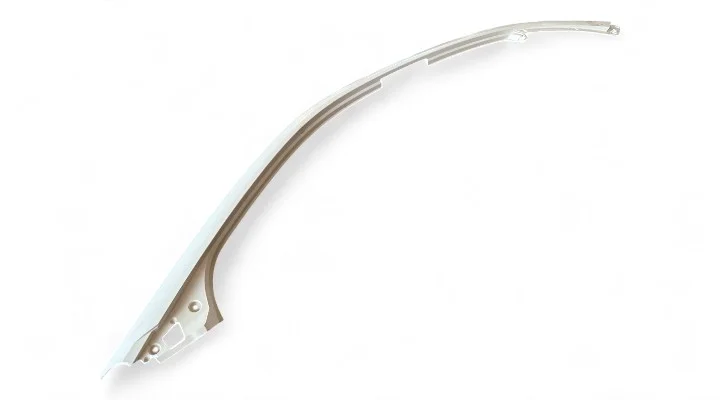Performance and Application Advantages of Composite Roof Side Rails
What is a Composite Roof Side Rail?
A composite roof side rail refers to a structural component installed along the top edge of a vehicle or railcar body. It mainly serves to enhance body rigidity, improve safety, and support the roof system. With the development of vehicle lightweighting and electrification, traditional metal side rails are increasingly being replaced by lighter, stronger, and more corrosion-resistant composite alternatives.
Types of Materials Used in Composite Roof Side Rails
Currently, the main composite materials used for roof side rails include:
- Glass Fiber Reinforced Plastic (GFRP): Cost-effective, suitable for mid- to low-end vehicle models.
- Carbon Fiber Reinforced Plastic (CFRP): High strength and low weight, ideal for high-performance and electric vehicles.
- SMC (Sheet Molding Compound): Suitable for compression molding and widely used in mass production.
- LFT (Long Fiber Thermoplastics): Combines high strength with good ductility.

Manufacturing Processes
The manufacturing of composite roof side rails mainly involves the following processes:
- Hot Compression Molding: Suitable for SMC/BMC materials, featuring short cycle times and ideal for high-volume production.
- Continuous Compression Molding: Suitable for producing long, uniformly shaped side rail profiles.
- Resin Transfer Molding (RTM): Ideal for producing hollow structural components with high complexity.
- Automated Layup + Autoclave Curing: Used for high-end carbon fiber components, ensuring dimensional accuracy and consistent performance.
Performance Advantages of Composite Roof Side Rails
- Lighter Weight: Compared to steel structures, they can reduce weight by 30%–60%, supporting overall vehicle lightweighting.
- High Strength and Good Rigidity: Fiber-reinforced layer structures offer excellent bending and impact resistance.
- Corrosion and Aging Resistance: Suitable for various harsh climate conditions.
- Integrated Design: Can incorporate drainage channels, trim attachment points, and other features to improve assembly efficiency.
- Environmentally Friendly and Recyclable: Thermoplastic composites can be reused, aligning with sustainability goals.
Typical Applications
Composite roof side rails are widely used in a variety of vehicles, including but not limited to:
- Passenger vehicles (sedans, SUVs): For example, rooftop structural components and panoramic sunroof frames in electric vehicles.
- Rail transit vehicles: Reinforcement components along the top side of carriages.
- Commercial and special-purpose vehicles: Such as roof frameworks for box trucks and RVs.
Future Trends and Prospects
With the rapid development of new energy vehicles and the promotion of carbon neutrality goals, lightweighting has become a key focus in the automotive industry. Thanks to their high performance, modularity, integration, and environmental benefits, composite roof side rails are becoming a priority structural component for OEMs and Tier-1 suppliers.
In the future, as material costs decrease and forming efficiency improves, composite roof side rails will deliver greater value across more vehicle types and industries.
Choosing a Reliable Composite Roof Side Rail Supplier
If you are seeking a customizable and mass-production-capable manufacturer of composite roof side rails, it is essential to partner with companies that possess strong mold development capabilities, automated production systems, and certified quality management. A quality supplier not only delivers products but also assists in structural optimization to balance cost and performance.
To learn more about composite vehicle body structures, SMC molds, or carbon fiber compression molding, feel free to explore our website or contact us for customized solutions.